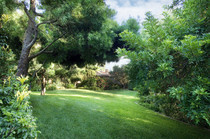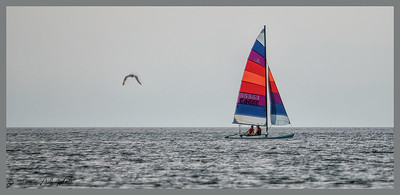Gwich'in Resist Alaska Drilling
by the Caribou Commons Project, photos by Amy Sherts
The Porcupine Caribou Herd is a herd of 130,000 barren ground caribou. The herd derives its unusual name from its twice-annual crossing of the Porcupine River during its fall and spring
migrations. The herd's annual migration from its winter range in the boreal forest of Alaska, the Yukon and the Northwest Territories to the coastal plain of the Arctic National Wildlife Refuge is
the largest migration of any land animal on earth. The Arctic Refuge is the core calving area for the herd. It is the place where pregnant females give birth to 40,000 calves each June. For many
reasons, wildlife biologists call this place a "critical habitat" for the herd.
For the Gwich'in of the Arctic it is simpler than that: the calving grounds are a sacred place.
The Gwich'in are caribou people. They have lived in the north and depended on the caribou for more than 12,000 years. Caribou are at the very heart of Gwich'in culture. As Gwich'in activist and
Caribou Commons Project speaker Norma Kassi says, "The relationship between the Gwich'in and the caribou is not one of convenience; it is one of necessity. A healthy Porcupine Caribou Herd is
necessary for the continued survival of Gwich'in culture."
The annual migrations of the Porcupine Caribou Herd evoke images of the movements of the long-gone buffalo herds of the Great Plains. Indeed, caribou mean as much to the Gwich'in as the buffalo
once meant to the Indians of the American midwest. There are many parallels between caribou and buffalo: both are migratory mammals requiring huge natural ranges, both survived in their lands for
hundreds of thousands of years, and both were an integral part of lifestyles and cultures of indigenous peoples. Tragically, free-ranging buffalo no longer exist on the Great Plains; however, caribou
still migrate across the Arctic ó for now.
The Arctic National Wildlife Refuge has been referred to as "America's Serengeti" for its biological diversity. The Refuge contains important habitat not only for cow caribou and their calves but
for dozens of species of other mammals and more than a hundred species of migratory birds. Musk oxen, wolves and grizzlies thrive here. Among the birds that flock to the coastal plain every spring to
nest are snow geese, tundra swans, golden plovers and red-throated loons. The coastal plain is also the most important on-shore denning area for polar bears in the United States.
Unfortunately, wildlife biologists and aboriginal people are not the only ones interested in the caribou calving grounds. Multinational oil companies such as British Petroleum, Exxon and Chevron
have taken an interest in the calving grounds, too, but for very different reasons. They are lobbying Congress to allow them to drill for oil in this sacred place. Since the election of Bush, these
companies have redoubled their efforts and gaining confidence in their bid to gain access to the calving grounds. Opening up the coastal plain of the Arctic Refuge is a central component of Bush's
energy policy. This is a crucial time for the calving grounds, the caribou and the Gwich'in.
Biologists and Gwich'in Elders know that this special, sacred area is too sensitive to support industrial development. Female caribou with their newborn calves avoid the sights, sounds and smells
of oil development. They would be forced to bear their young elsewhere, in places where nutrient-rich food is less plentiful and predation is greater. Wildlife biologists say that oil development
would almost certainly trigger an increase in caribou calf mortality, which would affect both the herd and the Aboriginal People who depend on it.
The oil industry's record of environmental abuse ranges from huge disasters such as the Exxon Valdez oil spill to the less headline-grabbing daily befouling of the Arctic's land, air and water.
The oil industry says it does things differently now, but year after year tens of thousands of gallons of crude oil and other hazardous wastes continue to be spilled in the once-pristine Arctic north
slope. The oil fields annually produce more air pollution and greenhouse gases than the municipality of Washington, DC. Ninety-five percent of Alaska's Arctic coastal plain is already open for oil
development. Thousands of miles of roads and pipelines, airstrips, production facilities, airports and gravel pits have changed the face of the Arctic forever. It is not too late to preserve and
protect the remaining five percent of Alaska's North Slope that still exists as nature intended it.
The Arctic National Wildlife Refuge was originally created under President Eisenhower as the Arctic Wildlife Range. It was expanded in 1980 to 19 million acres, 84 percent of which was designated
part of the National Wilderness Preservation System. Multinational oil corporations at the time managed to convince Congress to exclude the coastal plain from this designation. Despite overwhelming
public support for permanent protection of the Refuge, and a US Supreme Court ruling that the Refuge is protected and belongs to all Americans, the multinationals continue their well-financed push
for development in the calving grounds.
Pro-drilling forces in Congress are currently trying to pass legislation that would allow oil development in the Arctic Refuge. Republican Senator Frank Murkowski of Alaska is hoping that high
gasoline prices in the summer of 2001 will convince enough senators to vote for a comprehensive energy bill that would allow drilling in the calving grounds of the Porcupine Caribou Herd. Murkowski
hopes to force a vote before Congress recesses at the beginning of August.
At the moment, though, polls show that a majority of the US public is opposed to opening up the Arctic Refuge to development, and votes in Congress reflect that opposition. Even many Republican
senators have said they will vote against any bill that permits drilling. If enough Americans let their politicians know that they support protection of the Arctic Refuge, the Gwich'in hope that
wilderness legislation will be passed during the next few years. However, the battle is far from over, and the fate of the caribou and the Gwich'in is still highly uncertain.
The issue of oil development in the calving grounds of the herd is now one of the most important conservation issues in the world. For the Gwich'in, it is a human rights issue that goes to the
very core of their thousands-of-years-old culture.
Contact the Caribou Commons Project, 21 Klondike Road, Whitehorse, Yukon, Y1A 3L8, project@cariboucommons.com, www.cariboucommons.com
|
























